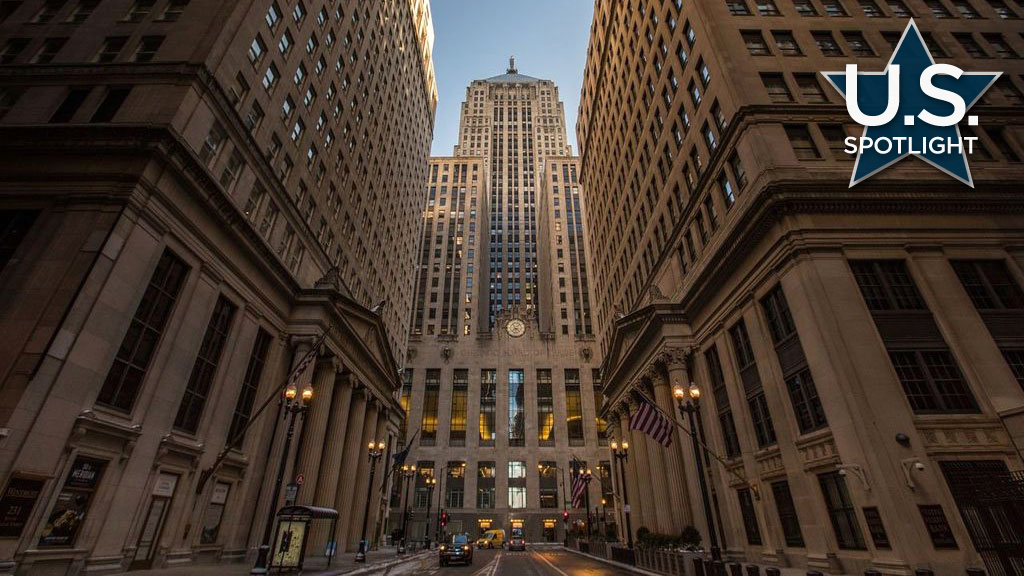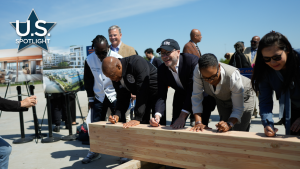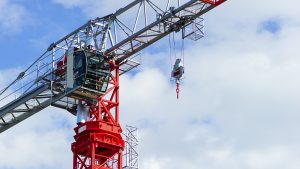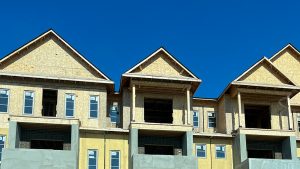The Chicago Loop continues a transformation from a storied, yet near empty, downtown to one filling with people again.
After new hotel developments, the City of Chicago is allocating funds for major conversions of handsome, but partly empty, office towers.
That’s the linchpin – especially for the affordable housing component – for the partial remakes of four stately historic and modern towers on LaSalle Street, the main north-south artery that bisects The Loop and West Monroe Street, which crosses it.
If you’re not quite sure where this is you’ve probably seen numerous shots of the area in films like The Untouchables, Home Alone and The Dark Knight.
These are impressive buildings, 100-year statuesque edifices which hosted some of the largest titans of commerce in the Windy City’s financial district.
111 West Monroe, for example, a Neoclassical beauty with four pink granite pillars, is the current home of Canadian-owned BMO Harris Trust and Savings Bank. The 21-storey 208 S. LaSalle Classical Revival is named for the City National Bank and Trust Company and has a three-storey colonnade of eight Doric columns.
The smaller 79 West Monroe St. is known for its iconic Weather Bell on the corner which changes colors predicting changes in temperature.
And 30 N. LaSalle is a mid-century International Style 44-floor tower.
This spring the City of Chicago kickstarted the office-to-residential conversion in these buildings with $150 million towards the $520 million cost, creating up to 1,000 residential units and repopulating the area with full time residents, for the first time, in addition to the transient office and hotel population.
“These four buildings are sure to become our poster children, if you will, for the Loop’s rebirth as a mixed-use neighborhood and we are thrilled with each (development) team,” city planning commissioner Ciere Boatright said.
They are also part of what former mayor Lori Lightfoot envisioned in her LaSalle Reimagined plan. Lightfoot lost a bid for re-election last year to former Cook County Commissioner Brandon Johnson.
The Loop had lost pedestrians and office workers for both long- and short-term reasons, with a drift away to newer office submarkets such as the West Loop with mixed-use and loft style buildings, and hybrid work styles in the wake of COVID-19.
111 W. Monroe is the most expensive conversion creating 345 rentals, of which 105 will be affordable. The $202-million project is being undertaken by Prime Group Inc. and Capri Investor LLC, getting $40 million from tax increment financing (TIF) and other tax inducements. Prime is also working on a conversion of the city’s Thompson Center for Google’s new Chicago HQ.
30 N. LaSalle by Golub & Co. will see 349 units of which 105 are affordable, backed by $57 million in TIF.
Prime Group’s 208 S. LaSalle will see 226 apartments, 68 affordable. The $122 million cost includes $26 million in TIF.
79 W. Monroe, the smallest of the structures, will see almost the entire building (eight floors) converted by the Campari Group to 117 units, 41 affordable with $28 million in TIF going towards the $64 million project.
Affordable in this case is for people earning at or below the area’s median income or $53,000 for a two-person household.
Mike Reschke, founder of Chicago-based Prime, said residential housing just continues what his company has being “doing for over four decades.”
Those have principally been hotel conversions such as the JW Marriott Hotel in an historic landmark, and the world’s largest Residence Inn also on LaSalle Street.
Despite the experience Reschke says there’s a “ton of issues” with conversions.
“These older office buildings weren’t necessarily built to be either hotel rooms or apartments,” he says.
Certain physical factors are critical.
“If it’s a building with a big floorplate with a limited window line then it’s probably not very well suited,” he said. “However, in our past we’ve taken buildings with a big floorplate and limited window line, and we’ve cut a hole in the middle and made a doughnut out of the building with an open-air atrium in the middle, so that increased the ratio of window to floor area.”
Reschke said the conversions couldn’t be done without something like TIF.
“It’s very important for the residential component because that’s the more difficult use to make the numbers work, especially if you’re building 20 to 30 per cent affordable units where you’re renting at substantially lower rents to people that meet the lower income tests.”
Michael Edwards, president and CEO of the Chicago Loop Alliance, said the conversions “mean an awful lot” and congratulates the city and local developers.
“Like we really can’t do it without the city,” he said. “I think it shows the tenacity of the development community in taking on these rather challenging projects to covert office space.”
Edwards said Chicago is also on the “front edge” of U.S. cities by moving forward with so many older building conversions.
“It’s not an easy thing to do and we’re at the moment a leader.”











Recent Comments
comments for this post are closed